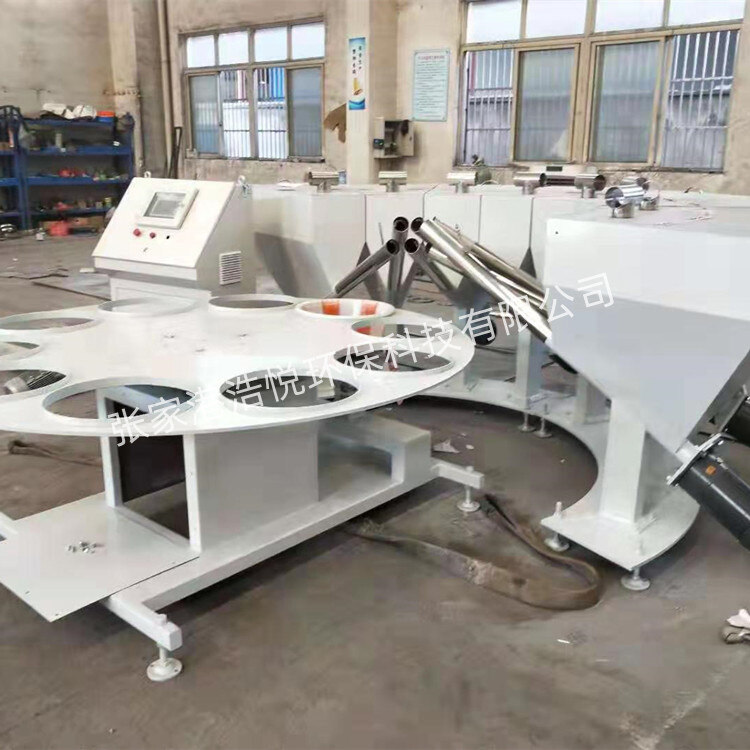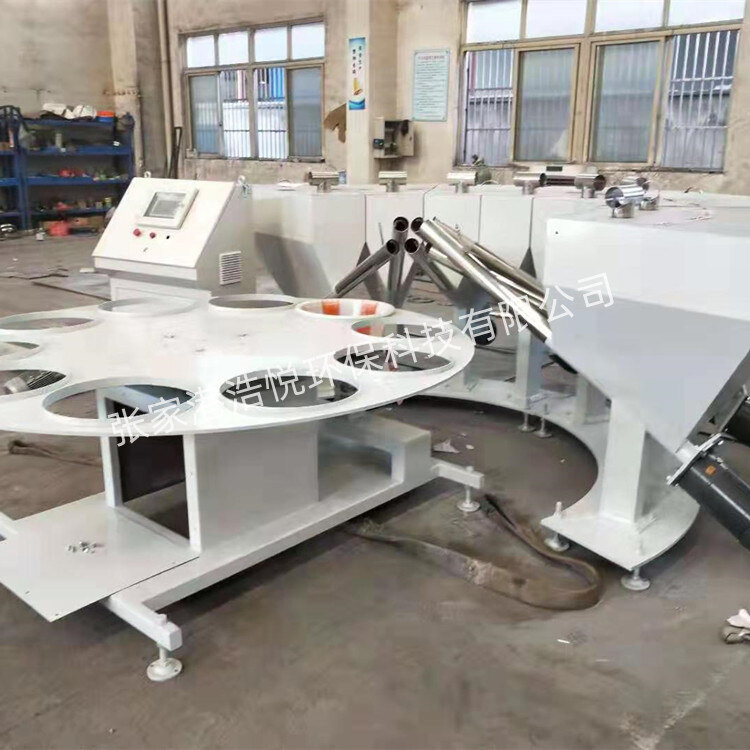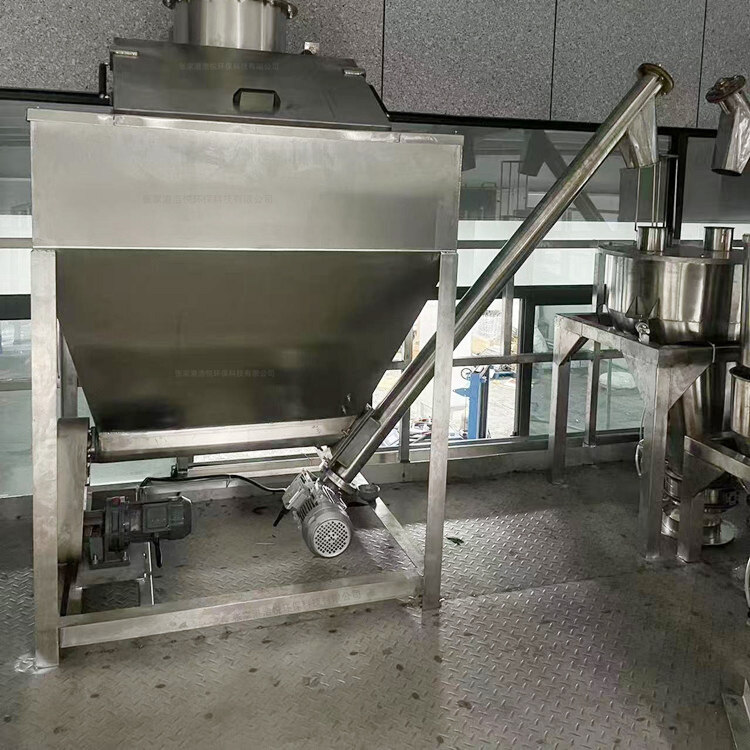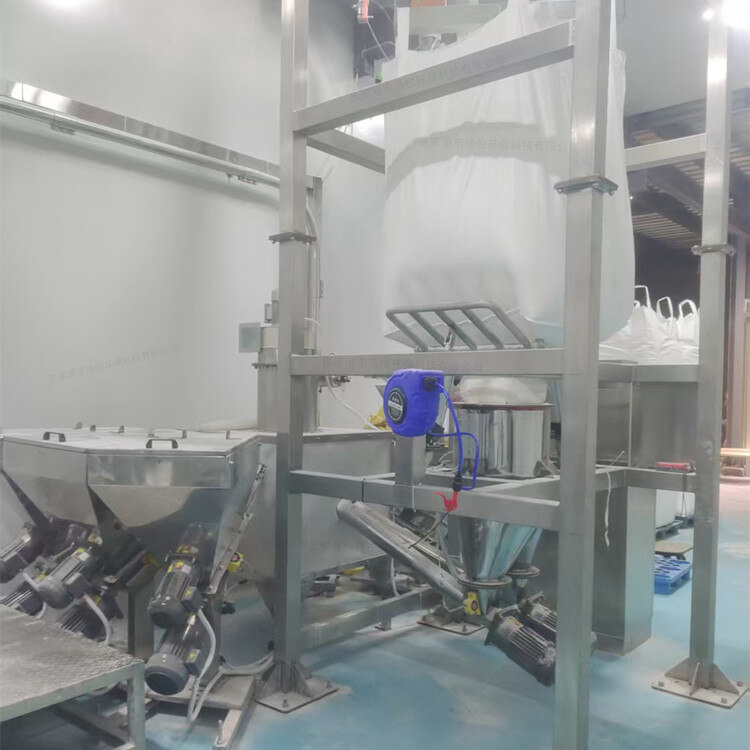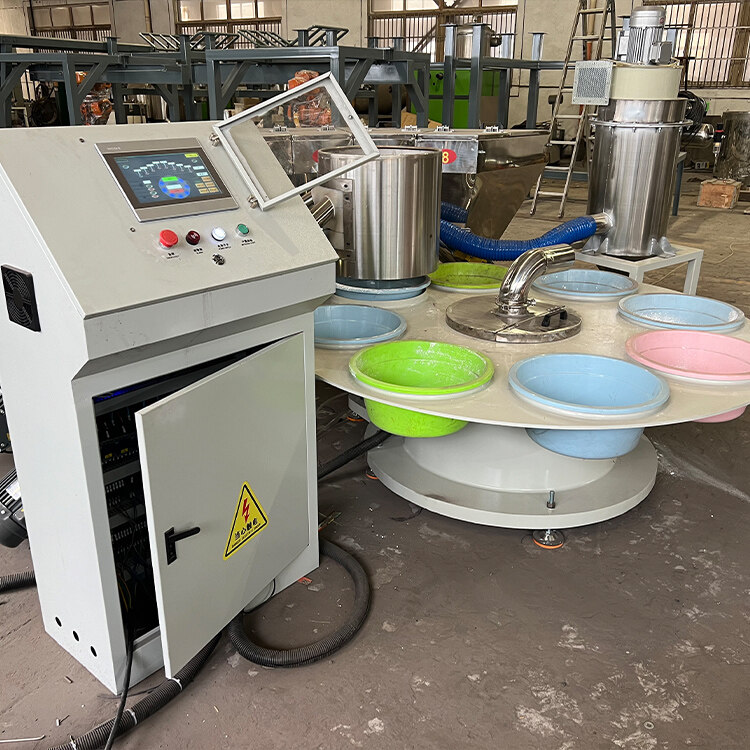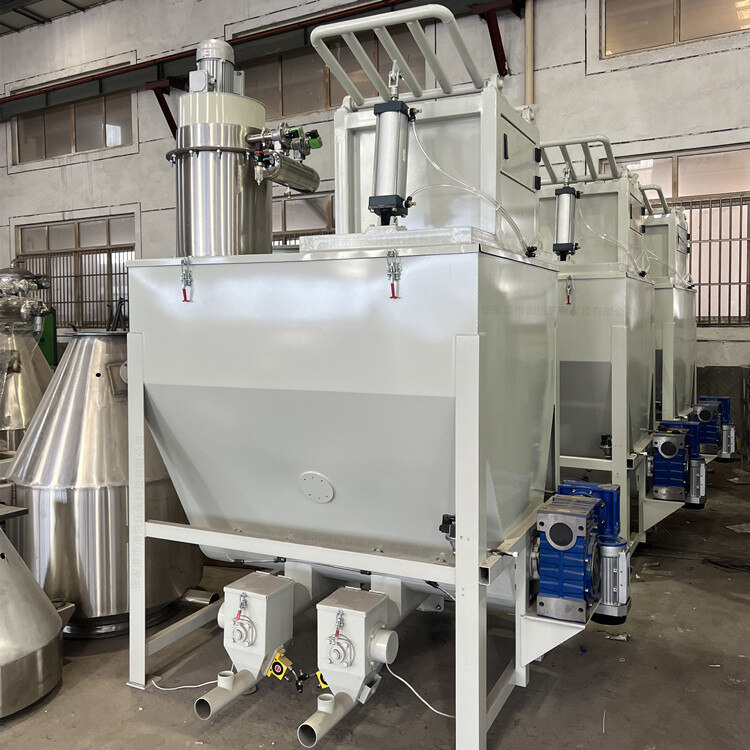- Introduction to automatic batching machine and fully automatic batching machine equipment
- The powder metering system tells you about the introduction of the mixing and drying machine
- 1000kg vacuum feeding machine
- Fully automatic small material batching system
- Research on Innovation of Automatic Weighing Machine Technology
- Design and operation of automatic batching system using PLC, industrial computer and frequency converter
Fully automatic batching machine, manufacturer of automatic batching machine
- Category:Batching Plant
- Hits:107次
- Release Date:2025-06-30
- Share:
- Inquiry
- Details
In the current era of increasing automation in industrial production, fully automatic batching machines have become key equipment for improving production efficiency and product quality in many industries such as food, chemical, pharmaceutical, and building materials due to their high efficiency, precision, and stability. As the research and development, production, and service providers of equipment, the technical strength, product quality, and after-sales guarantee of automatic batching machine manufacturers directly affect the production efficiency of enterprises. The following will provide a detailed introduction to the working principle and functional advantages of fully automatic batching machines, as well as the core competitiveness and typical cases of automatic batching machine manufacturers.
1、 Working principle and structural composition of fully automatic batching machine
(1) Working principle
The fully automatic batching machine is based on automation control technology, which achieves automatic metering, proportioning, and conveying of various materials through preset production formulas and process parameters. The core principle is to use sensors to collect real-time data on material weight, flow rate, etc., and transmit the data to the control system. The control system automatically adjusts the operating status of the feeding equipment based on the deviation between the preset value and the actual value, forming a closed-loop control to ensure the accuracy of the ingredients. For example, in weighing based batching, when the weight of the material reaches the set value, the control system will automatically close the feeding valve and stop the material transportation.
(2) Structural composition
Material storage unit: used to store various materials to be mixed, usually consisting of sealed silos, hoppers, etc., and equipped with level sensors to monitor material inventory in real time. When the material is below the set value, it will automatically alarm and prompt for replenishment. According to the characteristics of different materials, some storage units also have functions such as moisture-proof, dust-proof, and temperature control.
Measurement unit: It is the key to achieving precise batching, and common measurement methods include weighing measurement, volumetric measurement, and flow measurement. Weighing measurement directly measures the weight of materials through high-precision weighing sensors and measuring buckets; Volume measurement uses components such as screws and plungers to control the volume of materials; Flow measurement is suitable for continuous production, where material flow is monitored in real-time through flow meters.
Conveyor unit: responsible for conveying the measured materials to the mixing equipment or the next production process. Common conveying methods include spiral conveying, belt conveying, pneumatic conveying, etc. The appropriate conveying method can be selected according to the characteristics of the materials (such as particle size, humidity, viscosity).
Control system: With PLC (Programmable Logic Controller) or industrial computer as the core, combined with dedicated ingredient control software. The operator inputs the production formula through the human-machine interface (HMI), and the control system automatically coordinates the operation of each unit to achieve fully automated batching operations. It also has functions such as data recording, fault diagnosis, and remote monitoring.
Mixing unit: Fully mix and evenly distribute various materials conveyed by metering. Common equipment includes double screw belt mixer, planetary mixer, etc., and ensure the uniformity of material mixing through different mixing methods and speed settings.
2、 The functional advantages of fully automatic batching machine
(1) High precision ingredients
By adopting advanced sensors and control algorithms, the measuring accuracy of the fully automatic batching machine can reach ± 0.1% - ± 1%, which can meet the strict requirements of different industries for batching accuracy. For example, in the pharmaceutical industry, the micro addition of active pharmaceutical ingredients needs to be precise to the milligram level, and fully automatic batching machines can achieve precise control through high-precision weighing sensors and micro metering devices.
(2) Efficient automation
Replacing traditional manual batching methods, the fully automatic batching machine can operate continuously for 24 hours, greatly improving production efficiency. At the same time, automation control reduces manual operation errors, avoiding ingredient errors and production accidents caused by human factors.
(3) Flexible formula management
Supporting the storage and quick switching of multiple formulas, operators only need to select the corresponding formula in the control system, and the equipment can automatically call parameters to complete ingredient operations. It is suitable for multi variety, small batch production modes and improves the flexibility of the production line.
(4) Data Management and Traceability
Equipped with data collection and storage functions, it can record information such as material types, ratios, and times for each batch of ingredients, facilitating production management and quality traceability. Enterprises can optimize production processes and improve product quality stability through data analysis.
3、 The core competitiveness of automatic batching machine manufacturers
(1) Technical research and development capability
Excellent automatic batching machine manufacturers have professional R&D teams with knowledge in multiple fields such as mechanical design, automation control, sensor technology, etc. For example, some manufacturers have developed dynamic weighing compensation algorithms that can effectively eliminate the impact of material drop on measurement accuracy; A special conveying device developed for high viscosity materials has solved problems such as material blockage and residue.
(2) Product Quality Assurance
Strictly control every step from raw material procurement to production and processing, and then to finished product testing. Using high-quality raw materials such as steel and electronic components, certified by quality management systems such as ISO 9001; Before leaving the factory, the equipment needs to undergo multiple rounds of inspections such as no-load testing, load testing, and precision calibration to ensure stable and reliable product performance.
(3) Customized service capability
Provide customized solutions based on the customer's industry characteristics, production processes, material properties, and other requirements. Whether it is the size and structural design of the equipment, or the measurement method and degree of automation, they can be customized. For example, customizing stainless steel equipment that meets hygiene standards for food companies and designing structures that are easy to clean; Customize explosion-proof batching machines for chemical enterprises to meet the requirements of special production environments.
(4) Comprehensive after-sales service
Automatic batching machine manufacturers provide one-stop services such as installation and commissioning, operation training, regular maintenance, and troubleshooting. Some manufacturers have also established remote monitoring systems that can monitor the real-time operation status of equipment, detect and solve problems in a timely manner; Provide a 24-hour technical support hotline to ensure that customers receive quick response when encountering problems.
4、 Typical automatic batching machine manufacturers and application cases
(1) Manufacturer A: Focused on the chemical industry
A certain manufacturer has been deeply involved in the chemical industry for many years, and has developed multiple corrosion-resistant and explosion-proof fully automatic batching machines in response to the characteristics of multiple types of raw materials, strong corrosiveness, and complex reaction conditions in chemical production. In a project of a large paint production enterprise, the batching machine provided integrates a multi material weight loss measurement system and automatic cleaning function, improving the batching accuracy of paint production to ± 0.3%, increasing production efficiency by 40%, and reducing raw material waste caused by manual batching.
(2) Manufacturer B: Serving the food industry
The manufacturer takes food hygiene and safety as the core, and designs and produces a fully automatic batching machine made of food grade stainless steel material, which complies with GMP (Good Manufacturing Practice) standards. In the production line renovation project of a well-known baking enterprise, its customized batching machine achieved precise proportioning of various materials such as flour, sugar, yeast, etc., combined with automatic mixing equipment, greatly improving the taste and quality stability of bread products, and reducing customer complaint rates by 60%.
5、 Industry Development Trends
In the future, fully automatic batching machines will develop towards intelligence, integration, and green direction. In terms of intelligence, artificial intelligence and machine learning algorithms are introduced to achieve self diagnosis and self optimization of devices; In terms of integration, it deeply integrates with the enterprise's ERP (Enterprise Resource Planning) and MES (Manufacturing Execution System) to achieve collaboration in production planning, material management, and ingredient operations; Greening is reflected in reducing equipment energy consumption, minimizing material waste, and adopting environmentally friendly materials and processes. Manufacturers of automatic batching machines will continue to increase their research and development investment, enhance their technological innovation capabilities, and meet the increasingly diverse demands of the market.


